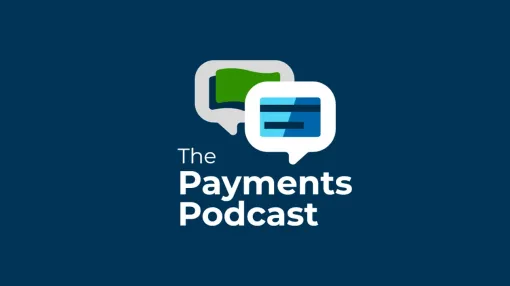Business payments, at their most basic level, are simple.
You want to pay efficiently, and you want to get paid on a timely basis. So, when I first started reading our sixth annual B2B Payments Survey Report, conducted with our partner Strategic Treasurer, I quickly saw that this was not a predictable exercise of collecting responses from 800 companies around the globe.
No, this one finds our partners navigating what is hopefully the final throes of COVID-19, the most disruptive global event in decades. As someone who preaches efficiency, automation and electronic payments, even I found myself surprised by the dramatic results I’m about to explore. In short: large enterprises are leading the way toward consistent and secure electronic payments.
That’s just one of the key findings in this year’s report. But it’s far from the only one. But let’s start with what I see as the big story and I’ll cover four in total. I urge you to pick your own key findings when you read the report.
1. B2B payments are being led by large businesses
Large businesses, or corporations that have over a billion dollars in annual revenue, are now making more than half of their payments electronically. The detail shows that 70% of the large businesses are making more than 50% of their payments electronically. For businesses with less than $1B revenue, only 49% make more than half of their payments electronically.
What you will see in the report draft is that we asked a simple question: Which of the payment types do these businesses plan to increase over the next 12 months? And the answer was staggering. 60% said ACH, almost 40% said card. That shows a really strong adoption of electronic payments.
2. The top AP challenges all center around efficiency
Specifically, the top challenge was timely invoice approval (42% of respondents) followed by and updating bank account details (38%) and getting paid on a timely basis, which was identified by small firms (45%) more than large (31%). Why have invoices climbed to the top of the list?
Obviously, it has to do with cash flow, but I would also point out that it represents the kind of challenge that is easily mitigated by AP/AR automation. When you look at bank details this ties in nicely to security. Making sure that you have reliable automation to manage and update vendor bank account details in an efficient manner is an easy fix. There are solutions out there.
Last but not least, missing vendor information is arguably the best business case for AP automation. AP staff don’t have the time to hunt down vendor information, call the vendor and enroll the vendor. It’s arduous and time consuming. When sending a payment, whether it’s via card, ACH, or even check, you need accurate and complete information, and you can’t rely on outdated analog systems to help support that.
3. AP fraud losses are real and growing
The bigger they are, the more frequently they fall. Twenty-one percent of larger companies experienced one or more losses, with 11% of small companies suffering at the same level. Thirteen percent of larger companies had two or more losses in the past year. For small companies, that number was 5%. Also, the survey found that more AP systems were breached in 2022. The percentage of companies that indicated their AP system was breached and a payment was sent increased from 7% in 2021 to 11% in 2022.
We know bigger companies are more attractive targets, simply because they have more resources, but they should also have better defenses. Smaller companies don’t have the same intensity of fraud attacks, although they are generally perceived as weaker/more vulnerable. It could mean that fraudsters are becoming more aggressive and going where the big dollars are.
4. Evaluation criteria need better definition
The survey found that efficiency is a top driver for evaluating new automation solutions. Now, what do we mean by efficiency? Essentially it depends on the business size and vertical. AP teams measure efficiency using a number of metrics, including the cost to process a paper invoice, the cost to process a paper check, and payment processing time. Efficiency is important to define as it topped the list for the fourth year in a row. And as it stands, what are the top three most inefficient components of your company's financial operations? When asked that question, top of the list was cash flow forecasting, invoice processing, accounts receivable and your accounts payable processes. I would recommend that companies dig deep into their definition of efficiency when evaluating an AP/AR solution.
The Bottomline
This year’s report catches finance leaders at a crossroads. The pain points, some of which are detailed here, are significant. In fact, I urge you to read the section on cash flow. It is at the heart of many of these key findings and the report contains some workable solutions for getting paid on time, or at least on a predictable schedule.
That's particularly true now with the cost of capital increasing. The days of low cost or “free” money are over with the Federal Reserve increase the rates every time they meet. As I write this I am aware of banks charging 4-16% for lines of credit – based on the size and credit worthiness of the business they are loaning money too. The report abounds with solutions, not just problems.
For that alone, it’s worth a read. But if I had to take one thing away from B2B Business Payments 2022, it would be the critical mass that electronic business payments have achieved as well as the urgent need to secure them. Master those two factors, evaluate your partners rigorously, and I would say your business is in good hands.


